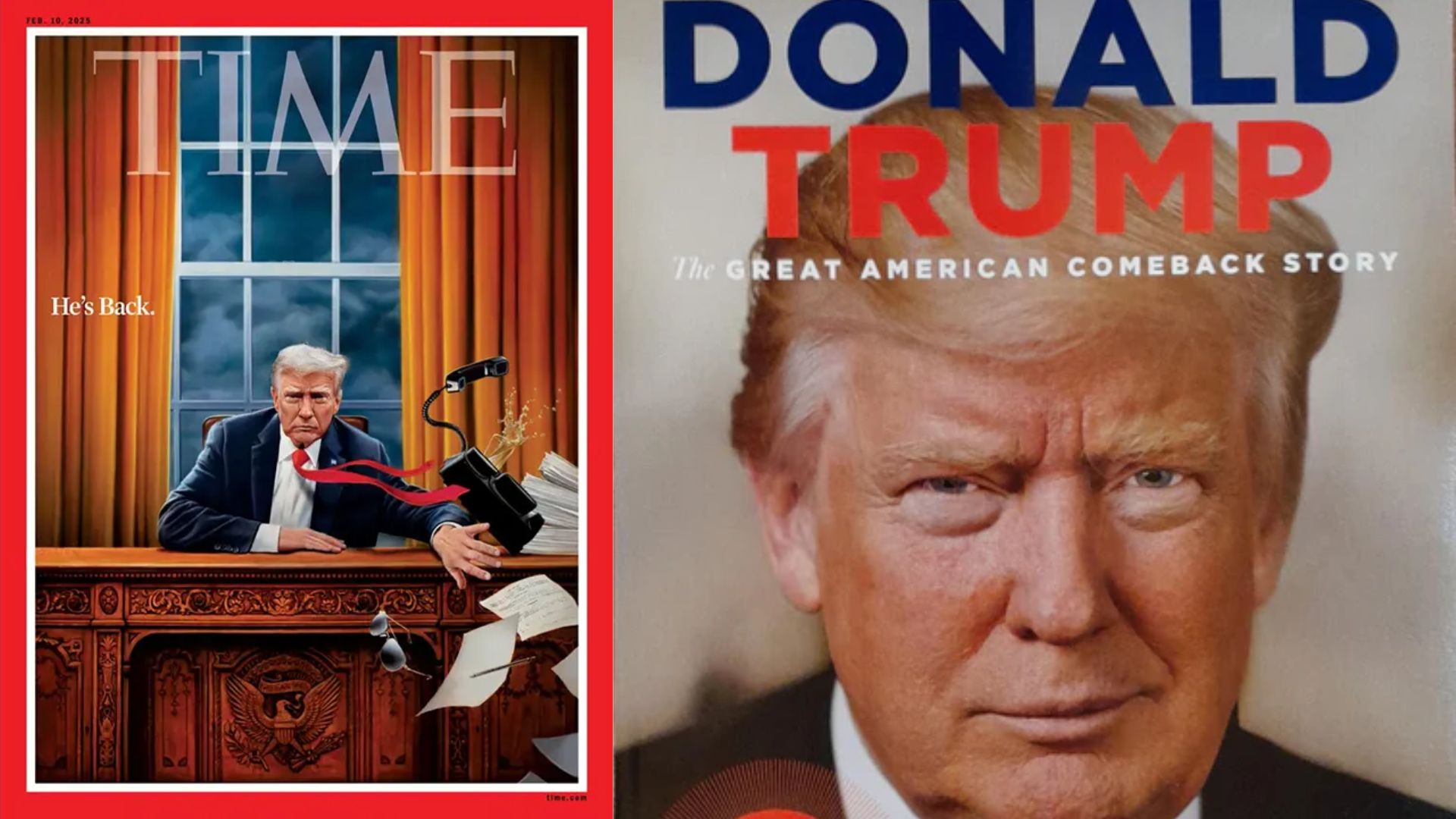By Techbish News
In a dramatic media clash dominating U.S. news cycles, Donald Trump has publicly blasted the new Time Magazine cover, accusing Time Magazine of intentionally selecting a “super bad” image to accompany a largely favorable story about his diplomacy. His furious response has ignited debates about media bias, photo manipulation, and the limits of press power.
Trump’s Furious Reaction to the Time Magazine Cover
Trump was swift and outspoken in his condemnation of the image used on the Time Magazine cover.
Complaints Over Photo Angle, Hair, and ‘Floating Crown’
Trump took to Truth Social in the early hours, writing that while Time Magazine “wrote a relatively good story about me, the picture may be the Worst of All Time.” He claimed the photo “disappeared” his hair and featured a weird “floating crown” effect above his head. The angle — shot from below — drew further ire: “I never liked taking pictures from underneath angles,” Trump said, labeling the cover as “super bad.”
A Familiar Pattern of Media Criticism
Trump’s outburst continues a long-running battle he wages with media depictions of himself. Even when Time Magazine has praised him — as it appears to have in this issue — he has often turned critical of its visual choices. Observers note that his obsession with photographic representation is deeply rooted in his broader strategy of shaping public perception.
The Cover’s Context: Praise Meets Controversy
While the photo sparked backlash, the Time Magazine cover carried deeper editorial ambitions.
What the Cover Story Was Celebrating
The issue in question frames Trump’s recent diplomatic achievement — a Gaza ceasefire and hostage release deal — as a watershed foreign-policy victory. The magazine’s editorial tone largely lauds his role as peacemaker, even calling the deal a potential signature of his second term.
Why the Photo Choice Matters
In visual media, perception often equals power. A striking or flattering cover image can amplify editorial messaging — but a contested image can undercut it. By drawing attention away from the diplomatic story and toward his displeasure with the photo, Trump may be undermining Time Magazine’s narrative control.
Expert Views on Media, Image, and Influence
The interplay of media framing and presidential image has long fascinated analysts.
Photography, Power, and Political Messaging
Media scholars stress that cover photos function as visual arguments: they validate or challenge a subject’s authority. For example, selecting an unflattering angle for a high-profile figure like Trump signals editorial positioning, intentionally or not.
Trump’s Media Wars: Strategy, Not Impulse
Trump’s hostility toward visual representation is often strategic. He has previously threatened media outlets over critical portrayals, seeking leverage over coverage in his second term. By amplifying outrage, he shifts public focus from content to the messenger — turning the media on itself.
Reactions, Fallout, and Future Implications
Trump’s backlash has triggered responses across media, politics, and public discourse.
Media Outlets Respond and Engage
Time Magazine has not immediately responded to Trump’s public critique. Political outlets and commentators are weighing in, dissecting both the cover’s design and Trump’s motivations. Some see it as a distraction from policy debates; others view it as deliberate posturing on his part.
What It Means for Media-Figure Relations
This clash spotlights tensions between powerful figures and the press. As Trump continues to challenge media norms, covers like this may become rare flashpoints — where editorial decisions and political drama collide.
Closing Discussion
The explosive reaction to the Time Magazine cover underscores how visuals now carry enormous political weight. Trump has transformed what could have been a standard cover story celebrating a diplomatic milestone into a full-blown media controversy.
The key takeaway: in today’s media landscape, a single photograph can redefine narratives, control attention, and spark wider cultural debates. Whether Time Magazine adjusts its visual approach or digs in remains to be seen — but one thing is certain: this fight over imagery has only just begun.
Share your thoughts and join the conversation — because in the age of instant media, how we see our leaders can matter as much as what we read about them.







